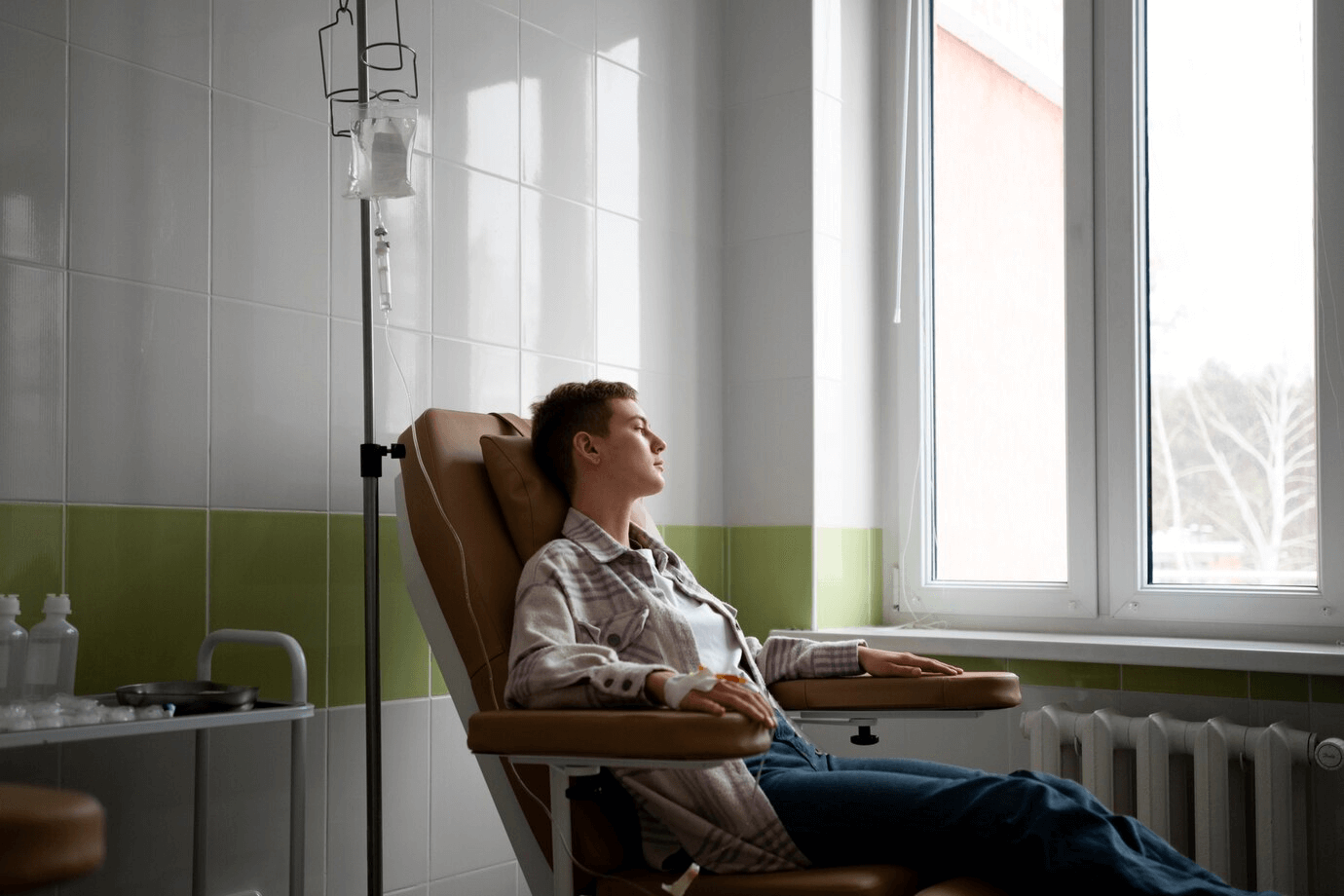
Migraines are a complex and debilitating neurological disorder affecting an estimated one billion people worldwide. The pain associated with migraines can be so intense that it interferes with daily activities such as work or school. While there is no single cure for migraines, there are several strategies to help manage symptoms and reduce the frequency of attacks.
In this article, we’ll discuss some practical coping strategies that migraine sufferers can use to lessen the pain they experience and improve their quality of life.
What Is Migraine?
Migraine is a neurological disorder marked by recurrent, intense headaches typically ranging from moderate to severe in strength. Alongside the headache, individuals often experience additional symptoms, including vomiting, nausea, sensitivity to light and sound, and occasional visual disturbances. Although the precise cause of migraines remains not entirely comprehended, it is thought to result from a unique interplay of genetic, environmental, and neurological factors.
Migraines typically follow a pattern of four stages: prodrome, aura, headache, and postdrome. However, not all individuals experience all stages, and the duration and intensity of each stage can vary from person to person.
-
- Prodrome: This stage occurs before the onset of a migraine attack and is characterized by subtle changes that can serve as warning signs. These changes may include mood swings, food cravings, increased thirst, neck stiffness, and increased urination.
-
- Aura: Not all migraine sufferers experience an aura, but for those who do, it typically occurs before or during the headache phase. Auras are usually visual disturbances, such as seeing flashing lights, zigzag lines, or temporary vision loss. Other sensory disturbances, such as tingling sensations in the face or hands, may also occur.
-
- Headache: The headache phase is the most debilitating and can last from a few hours to several days. Migraine headaches are often described as pulsating or throbbing and are usually accompanied by intense pain on one side of the head. Other symptoms during this phase may include dizziness, vomiting, nausea, and sensitivity to light and sound.
Postdrome: After the headache subsides, individuals may experience a postdrome phase, also known as a migraine hangover. During this phase, people often feel drained, fatigued, and may have difficulty concentrating. Some individuals also experience mood changes, such as feeling irritable or elated.
It’s important to note that migraines can vary significantly between individuals, and not everyone will experience all of the stages or symptoms mentioned above.
Causes of Migraines
The complete understanding of the causes of migraines is still lacking. However, research suggests that migraines are likely to be influenced by a combination of genetic, environmental, and neurological factors. Here are some common factors that are believed to contribute to the development of migraines:
1. Genetic Factors
Migraines tend to run in families, indicating a genetic predisposition. People with a family history of migraines are more likely to experience migraines themselves.
2. Imbalances in Brain Chemicals
Migraines may be triggered by imbalances in certain brain chemicals, such as serotonin. Serotonin is involved in regulating pain signals, and changes in its levels can affect blood vessel function and pain perception.
3. Triggers
Various environmental and lifestyle factors can trigger migraines in susceptible individuals. Common triggers include certain foods (such as aged cheeses, chocolate, and processed meats), caffeine, alcohol, hormonal changes (such as during menstruation), stress, sleep disturbances, sensory stimuli (bright lights, loud noises), changes in weather or altitude, and certain medications.
4. Changes in Brain Activity
Migraines are believed to involve abnormal changes in brain activity. The exact mechanisms are not fully understood, but it is thought that these changes may affect blood flow in the brain and the way the nervous system processes pain signals.
5. Hormonal Factors
Hormonal fluctuations, particularly in women, can contribute to migraines. Many women experience migraines that are linked to their menstrual cycle, with attacks occurring before, during, or after menstruation.
How to Manage Migraine Symptoms

While there are migraine treatments available out there, managing migraine symptoms can be a multi-faceted approach that involves both preventive measures and strategies to alleviate pain during an attack. Here are some coping strategies for migraines:
-
- Identify and Avoid Triggers
Keep a migraine diary to track potential triggers and identify patterns. Once you identify triggers that consistently lead to migraines, try to avoid or minimize your exposure to them. Common triggers include certain foods, stress, lack of sleep, hormonal changes, and sensory stimuli. By understanding your triggers, you can take proactive steps to prevent migraines.
-
- Establish a Consistent Routine
Maintaining a regular sleep schedule, eating balanced meals at regular intervals, and managing stress through relaxation techniques (such as deep breathing, meditation, or yoga) can help stabilize your body’s internal rhythms and reduce the likelihood of migraines.
-
- Stay Hydrated
Dehydration can trigger migraines in some individuals. Maintain proper hydration by consuming a sufficient quantity of water throughout the day. It is generally recommended to consume at least eight glasses of water per day.
-
- Practice Stress Management
Chronic stress can contribute to migraines. Find healthy ways to manage stress, such as engaging in regular physical exercise, practicing relaxation techniques, getting enough sleep, and participating in activities you enjoy.
-
- Get Sufficient Sleep
Poor sleep quality or inadequate sleep can increase the risk of migraines. Aim for a consistent sleep schedule and create a sleep-friendly environment that promotes relaxation and good sleep hygiene.
-
- Use Cold or Hot Compresses
Applying a cold or hot compress to your head or neck during a migraine attack can help alleviate pain. Experiment with both to see which provides better relief for you.
-
- Maintain a Quiet and Dark Environment
Sensitivity to light and sound is common during migraines. Find a quiet, dark room where you can rest and relax during an attack. Use curtains or an eye mask to block out light, and consider using earplugs or playing soothing sounds to minimize noise.
-
- Consider Medication
Over-the-counter pain relievers, such as nonsteroidal anti-inflammatory drugs (NSAIDs) like ibuprofen or aspirin, may help relieve mild to moderate migraines. For more severe migraines, prescription medications specifically designed for migraines, including triptans, may be necessary. Consult with a healthcare professional for appropriate medication options and guidance.
-
- Explore Complementary Therapies
Some individuals find relief from migraines through complementary therapies such as acupuncture, biofeedback, cognitive-behavioral therapy, or massage. These therapies can help manage pain and reduce the frequency of migraines. Discuss these options with a healthcare professional to determine if they may be suitable for you.
-
- Seek Support
Migraines can be physically and emotionally challenging. Seek support from friends, family, or support groups who understand and can provide empathy and encouragement.
Keep in mind that migraines can vary significantly from person to person, and the strategies that prove effective for one individual may not necessarily be effective for another. It may take time and experimentation to find the coping strategies that best manage your symptoms. If migraines significantly impact your daily life or if you experience frequent or severe migraines, it’s important to consult with a healthcare professional for proper diagnosis, treatment, and personalized management strategies.
Final Thoughts
Migraines can be debilitating and difficult to manage, but there is hope. With a combination of non-medical treatments such as lifestyle changes, medical treatments like medications, and these strategies for migraine symptoms, it’s possible to effectively manage your symptoms. At Sunshine Infusion, we have a treatment that could help with your migraine episodes. If you’re tired of dealing with this debilitating condition, schedule a consultation today!




